#bavarian royals
Explore tagged Tumblr posts
Text
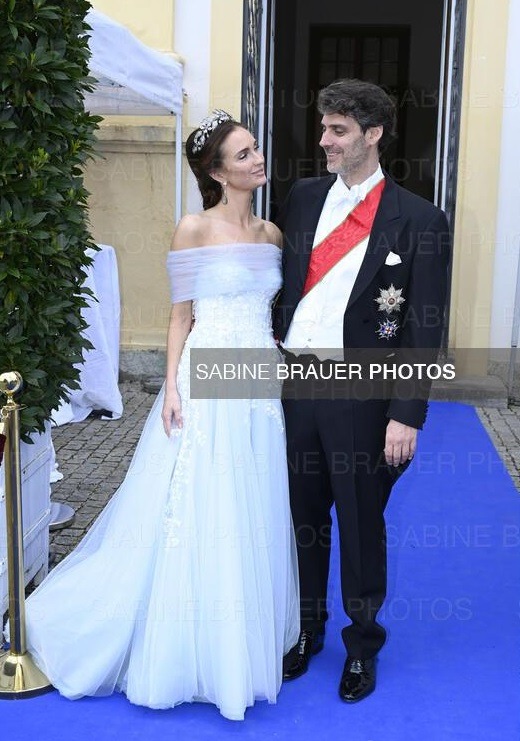
TIARA ALERT: Princess Sophie of Bavaria wore the Bavarian Sapphire Floral Tiara for the ball following her wedding Prince Ludwig of Bavaria at Schleissheim Palace in Munich, Germany on 20 May 2023.
#Tiara Alert#Princess Sophie#Bavaria#Bavarian Royal Family#tiara#sapphire#floral tiara#bridal tiara#Germany#German Royalty
70 notes
·
View notes
Text

European Royalty | Prince Ludwig of Bavaria.
14 notes
·
View notes
Photo

3 notes
·
View notes
Text

King Ludwig I of Bavaria with his Family, Jointly Examining the Painting ‘The Arrival of King Otto of Greece into Napflio"
Artist: Peter von Hess (German, 1792-1871)
Date: 1835
Medium: Oil on canvas
Description
Ludwig I or Louis I (25 August 1786 – 29 February 1868) was King of Bavaria from 1825 until the 1848 revolutions in the German states. When he was crown prince, he was involved in the Napoleonic Wars. As king, he encouraged Bavaria's industrialization, initiating the Ludwig Canal between the rivers Main and the Danube. In 1835, the first German railway was constructed in his domain, between the cities of Fürth and Nuremberg, with his Bavaria joining the Zollverein economic union in 1834. After the July Revolution of 1830 in France, Ludwig's previous liberal policy became increasingly repressive; in 1844, Ludwig was confronted during the Beer riots in Bavaria. During the revolutions of 1848 the king faced increasing protests and demonstrations by students and the middle classes. On 20 March 1848, he abdicated in favour of his eldest son, Maximilian.
Ludwig lived for another twenty years after his abdication and remained influential. An admirer of ancient Greece and the Italian Renaissance, Ludwig patronized the arts and commissioned several neoclassical buildings, especially in Munich. He was an avid collector of arts, amassing paintings from the Early German and Early Dutch periods as well as Graeco-Roman sculptures.
All living legitimate agnatic members of the House of Wittelsbach descend from him.
#portrait#king ludwig i of bavaria#royal family#19th century bavaria#family#artwork#king of bavaria#bavarian royal family#house of wilttelsbach#german history#red curtain#piece of art#full length#seated#men#women#child#costume#rugs#fine art#oil painting#german culture#german art#peter von hess#german painter#european art#19th century painting
1 note
·
View note
Text

Victorian Farmer's Dress
Simblreen 2024 Gift #1
This year, my idea was to create some outfits for the working classes in my game! As much as I love my royal sims, there are apparently others in the world? Who aren’t über-rich? Weird. But i made some stuff for them.
I started with this dress for female farmers! I was heavily inspired by this painting:

It’s of course heavily romanticized, but if that doesn’t describe my game then i don’t know what does.

20 swatches, some solids, some with patterns
includes elements from @vintagesimstress’s 1830s Ballgown and her Bavarian Dirndl, one of these @linzlu Blouses, and Sifix’s Illona Gown
basegame compatible
regular polycount
I hope you like it and find it useful!

TOU:
Please do NOT claim as yours.
Do NOT put behind paywalls.
Do NOT reupload.
DO recolor (without the mesh please!)
DO use for mesh edits
PLEASE give proper credit
HAVE a good time
Download: Patreon | Curseforge
#cc#simstomaggie cc#sims cc#the sims 4#ts4#sims 4#ts4cc#ts4 cc#ts4 cc maxis match#maxismatch#maxis match#s4#sims 4 cc#sims 4 cc Victorian#sims 4 cc farmer
223 notes
·
View notes
Text





helmets
1, 5 - colonel-in-chief helmet, royal bavarian 2nd heavy cavalry regiment
2 - m1916 camo stahlhelm
3 - helmet belonging to e. von falkenhayn
4 - colonel-in-chief czapka, prussian uhlan regiment (2nd brandenburg) no 11
58 notes
·
View notes
Note
So I noticed something interesting linguistically during my Spanish lessons but then I couldn't find a reason why and thought maybe you would have an idea?
Why does the word 'German' change so much from language to language? I mean you said Deutsch but we say German. But then in Spanish, it's Alemán. That's a massive change across three language. And I know they're from different language families but it still seems like a big change, I wonder why
I mean...yeah, it's kind of a situation

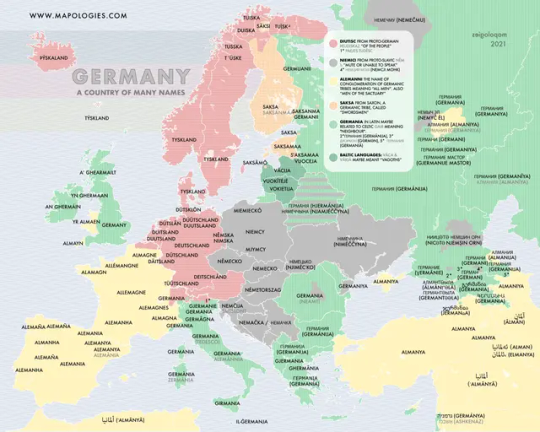

The thing is, Germany was only united as a single country in 1871. Before that, it was really a conglomerate of many different small cities, dukedoms, and kingdoms under the Holy Roman Empire (and before that: Tribes)
Modern-day Germany was just beyond the edge of civilisation during ancient times - Everything to the west and South, including France and England, was conquered and named and cartographed by the Romans but Germania was what was on the "other side":


The beige part was where civilisation ended for the Romans. Everything beyond the Limes was barbarian woods and most attempts to conquer there ended in military disasters like the battle of the Teuteburger Forest so ...not much progress was being made.
The name "Germania", that was used for EVERYTHING beyond the Limes border was apparently adopted from the word the Gauls used for the peoples they knew were living right there on the other side - and which meant something like "people of the forest" or possibly "neighbours" (which means the Romans might have done that ancient thing where they asked the Gauls: "Who lives over there?" and the Gauls were "Oh, yeah, those guys are our neighbours who sometimes come to our markets and that we fight with sometimes and who talk a little weird" and the Romans were like: "Ah, so the name of everyone living in the great beyond is 'Neighbours' and just stamped that name on a large chunk of the continent full of people who had never met a Gaul and had never heard of the word "Germania")
And because that area wasn't centralised the way the former colonies of Rome were, this pattern continued - when "states" (there was no modern-day statehood then, I guess the closest word would be "Reiche" but that would be Empires in English but that also doesn't describe it accurately and Reich has a Connotation in English and kingdom suggests a kind of continuity that didn't exist yet...) interacted with the people who lived in these lands, they often falsely assumed a level of social cohesion that didn't exist. One example is when Charlemagne pushed East, he would often make deals with the pagan Saxon tribes to please stop raiding all the nice monasteries he tried to establish - but it happened again and again, and people at the time concluded that the Saxons simply didn't honour their word. The problem was, that the Saxons were not united under one ruler and were not one cohesive tribe - so just because one of them made a deal to stop raiding monasteries, this doesn't mean anyone else got the memo or felt obliged to stop plundering those monks.
Even today, this kind of happens: Like "teutonic" being used for "german" because Teutons were a German tribe or people identifying Germany with Bavaria bc they hear a lot about the Oktoberfest or "Prussian" and "German" being equated because between 1871 and 1918, the Hohenzollern, being both the royal House of Prussia and the Kaiserhaus, largely dictated Germany's foreign policy and impression to the rest of the world, and even before that posing the biggest counter-weight to the Austrian/Austro-Bavarian role on the German-speaking playing field and often symbolising the different cultures (e.g. protestant vs catholic) existing across the German-countries-minus-Switzerland.
And this is also how the name thing happened: "Deutsch" just means "of the people" and was largely used for the language (hence "Dutch", being a very similar language to German, also having that very similar name, except, since they were the "Low Countries" (flat as a pancake land) of the Holy Roman Empire, they eventually took that name for themselves and their language when they became independent - the Netherlands speaking nederlands, while Belgish dutch-speakers speak "vlaams" after the region "Flanders") But since Germany never "separated" from the Holy Roman Empire but is largely considered its successor, there was no reason to make a regional name the name for a new nation. It just remained "the nation/the people".
Over the centuries, the other countries usually took whatever name there was for the regional tribe of Deutsche/people they dealt with and applied that to the whole thing: If you dealt primarily with the Alemanni people, you would use a word like the French "Allemagne", the English lived on an island and mostly kept using the Latin name "Germania" - which became "Germany". In Finland and Estonia it's "Saksa" and "Saksamaa" because being in the East, they mostly dealt with Saxons.
This also turned into an international game of telephone eventually: People who didn't have much contact with different kinds of Europeans would just pick up whatever name the people they dealt with used for Germany. If you had a lot of contact with the French or Spanish, you would pick up a variation of "Alman", if you dealt primarily with the English or Italians, it would be a variety of "Germania"
Then you have countries like Japan, which entered international exchange very late and had a lot of contact with Dutch and German speakers - which is why they say ドイツ - "doitsu". In Mandarin it's "Déguó" - guó meaning "land" and "Dé" for Deutschland.
Then there is also the language barrier: The modern nation-states of Germany and Italy both were once part of the Holy Roman Empire and neither had a standardised language (even today, on the European continent, Germany and Italy might take the prize for the most variations of their own language on the home continent) or considered themselves "German" or "Italian" until very late. So they distinguished between the people who spoke all the variations of their own language and those people above/below the Alps who were absolutely incomprehensible to them due to speaking an entirely different language family - so the Italians also spoke of "tedesco", which is related to the word "deutsch". (Italy cleverly spared itself most of this chaos by not having a lot of neighbours to begin with).
Another language barrier issue was in the East, because that's where Germanic languages and Slavic languages meet. This meant that while everyone who was part of the German(ic) dialect family could communicate with their neighbouring towns and tribes and everyone on the Slavic side could communicate with their neighbouring towns and tribes, they were also faced with those weirdos from the other side of the language barrier who were speaking absolute gibberish (or maybe just stared at you like an idiot and said nothing when you asked them a basic question) That's why in many Slavic languages, the name for "Germany" is a variation of "Niemcy" or "Německo" - which means "mute" or "non-speaker" or "foreigner" - because those were the people they couldn't talk to. Vācija, Vokietija, and Vuoceja also work this way)
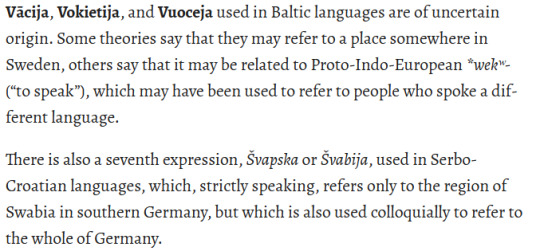
Meanwhile, in Germanic languages, it's often names that also incorporate the word "deutsch & land"- Duitsland, Tyskland, Deytshland, Däitschland, Þýskaland etc
(I think to do the language diversity and mutual communication argument some justice, I think it's also important to point out that there wasn't a lot of personal mobility for the average person at the time, so they probably also identified themselves by what little they saw of the world. If even today there are German-speakers that don't understand each other, that issue was bound to be amplified by 1000000 at a time with no standardised writing, no mobility, a thin population, small towns etc. So even if everyone between the furthest North-East of the Germanic language continuum and the lowest South-West could maybe somehow communicate with their respective neighbouring towns and tribes in pre-nation times, if you had snatched two peasants from the respective ends even of what is today Germany and sat them down on the table in the middle, there probably would have been to have even the most basic conversation or know that the other person spoke a variation of the same language - there is an old saying that "a language is a dialect with an army" - and for German, it's more "a dialect-continuum with a bunch of armies fighting each other until eventually, they got 1 army 2000 years late". Meanwhile for the educated, the lingua franca at the time was Latin.)
Now, a lot of countries ...well, eventually became countries. Which meant they could do some marketing of their own and establish their own name for themselves - but Germany, as I mentioned, was only united in 1871. Even if they considered their language "deutsch", they didn't consider themselves "deutsch" for a long time (and when they did, it was considered a radical idea) and as such, there was no centralised government saying "We are deutsch" the way the French kings said "We are French" or the English kings said "We are English" - in fact, the central authority until the early 19th century was the Holy Roman Empire. Their rulers considered themselves the successors of the old Roman Emperors - this was called the "translatio imperii" according to which Charlemagne was the first "new" Emperor" and the Empire continued until Franz II was forced to abdicate bc of Napoleon. Eventually, it was officially considered "Das heilige römische Reich deutscher Nation" - "the holy roman Empire of the german nation" - but that wasn't really a central aspect of anyone's identity.
The average person just identified by whatever colour their personal patch on this map was:

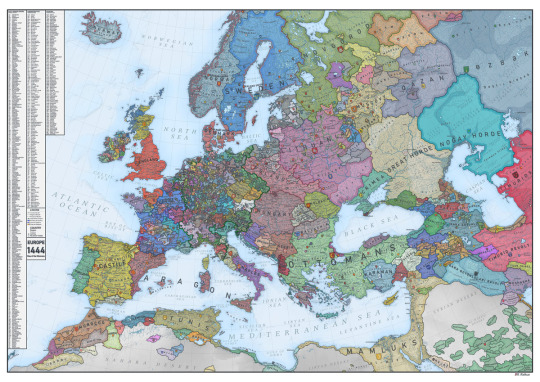
#InOurFlickenteppichEra
So no one really challenged to disagreed with someone speaking of them as "Saksa" or "German" and that's pretty much why everyone has a different name for Germany.
340 notes
·
View notes
Text
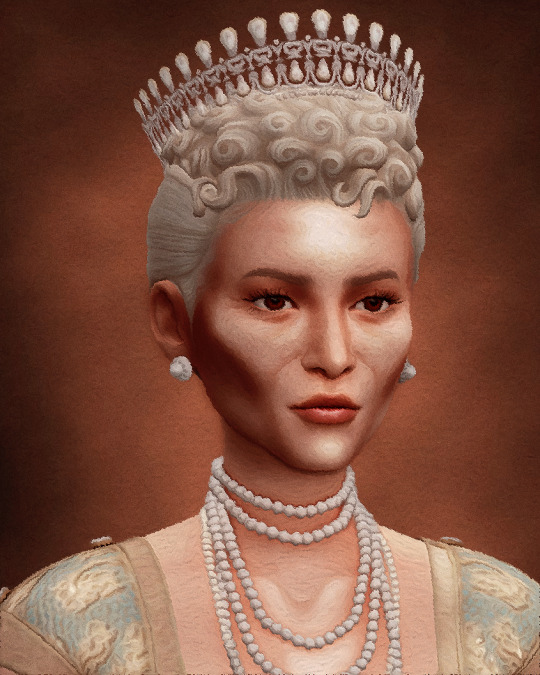
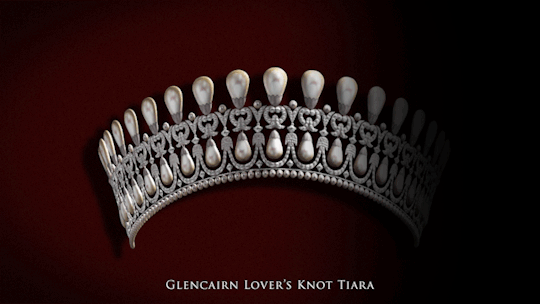
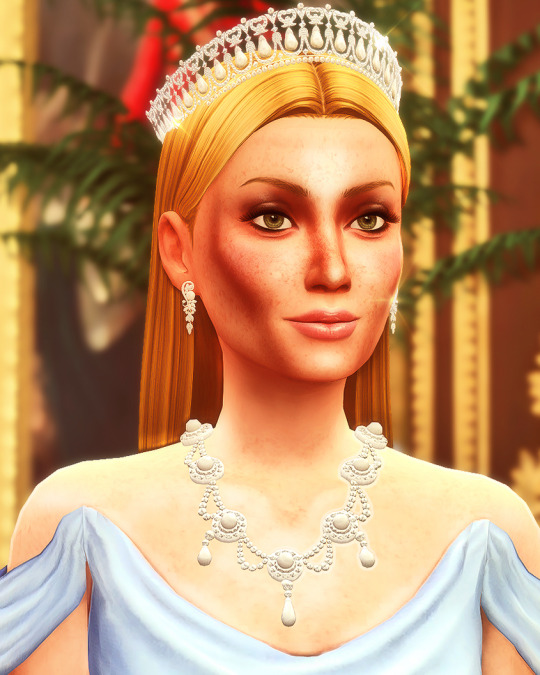

Sunderland’s Royal Jewel Vault (5/∞) ♛
↬ Glencairn Lover's Knot Tiara
In terms of jewelry, Sunderland has a very rich history that dates back centuries. The Glencairn lover's knot tiara is one of the oldest in the royal vault and has been passed down, from parent to child, since the days of King George. It is uncertain when this tiara was made. Featuring thirty-eight pear-shaped pearl pendants and lover's knot motifs, the design has proven popular. The Sunderland lover's knot is joined by the Cambridge and Bavarian lover's knot tiaras. All three tiaras were created in the 1800s, and all three are often mistaken for the much younger British version that was commissioned a century later. Despite their similarities, each of these tiaras have a distinct history and providence. In 1837, the Sunderland variant was gifted to Lady Imogen Longford as she prepared to marry the Duke of Glencairn, the second brother of King Louis III. The tiara was among other priceless gifts, for Imogen wasn't just marrying some prince, but a likely future king. The Duke's two older brothers had no surviving legitimate issue, and Sunderland was in the midst of a fierce succession crisis that pitted brother against brother. Ultimately, Imogen never became queen, that prize belonged to her German sister-in-law, Princess Caroline of Mecklenburg-Stralsund. However, Imogen was the mother of a king, giving birth to the future King George in 1839. As a result, most of her jewels are still worn by members of the royal family to this day. Sunderland's lover's knot tiara is perhaps the most famous of Imogen's jewels, having been worn by princesses and queens from every generation succeeding her. Despite rumours that the tiara is noisy, producing an awful "clacking" sound with every step its wearer takes, it has been a favourite of Queen Matilda Mary, Queen Anne, and Queen Irene in unflinching succession. The tiara is easy to fiddle with, flexible, with the top rows of pearls being removable. Since the 1830s it has starred in countless portraits, official images, and state events. Today, the tiara is on a long-term loan to Tatiana, Princess of Danforth who debuted the tiara in 2001. Since then the tiara has become her one of her most worn, next to her family's own diamond tiara. With the lover's knot's enduring popularity, it will be interesting to see who will don the sparkler next—at this point, it's almost a rite of passage.
A 1927 portrait of Queen Matilda Mary. She wears the tiara with its 18 pearl toppers.
Tatiana, Princess of Danforth wears the tiara sans toppers at a reception in June, 2018.
#warwick.jewels#✨#gif warning#ts4#ts4 story#ts4 royal#ts4 storytelling#ts4 edit#ts4 royal legacy#ts4 legacy#ts4 royalty#ts4 monarchy#ts4 screenshots#warwick.extras
36 notes
·
View notes
Photo

Royal House at Schachen, Wetterstein Formation, Bavaria, Germany,
© Bavarian Palace Department
Photo: Karin Weber
#art#design#cabin#lodge#royal#royal house#Bavaria#germany#schachen#ludwig II#luxuryhouses#luxuryhomes#luxurylifestyle#retreat#history#style
248 notes
·
View notes
Video
Bavarian Tiger by Treflyn Lloyd-Roberts Via Flickr: For the first time in quite a few years, 2024 saw a German Air Force aerobatic flying display (as opposed to role demonstration) during the Royal International Air Tattoo, with the Eurofighter on show. Aircraft: Luftwaffe Eurofighter EF-2000 31+06 from Taktisches Luftwaffengeschwader 74, wearing special Bavarian Tiger markings. Location: RAF Fairford, Gloucestershire.
#2024#German#Air#Force#aerobatic#flying#display#opposed#role#demonstration#during#Royal#International#Tattoo#RIAT#with#Eurofighter#airshow#show#fighter#jet#military#aviation#Aircraft#Typhoon#Luftwaffe#EF-2000#31+06#from#Taktisches
17 notes
·
View notes
Text
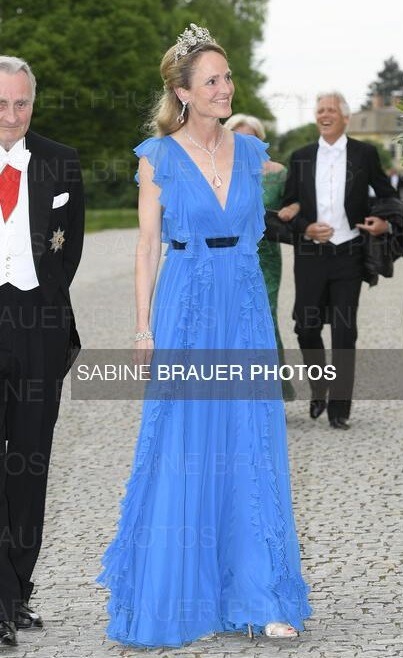
TIARA ALERT: Duchess Marie Caroline of Bavaria wore the Douglas Floral Tiara for the ball following the wedding of Prince Ludwig & Princess Sophie of Bavaria at Schleissheim Palace in Munich, Germany on 20 May 2023.
#Tiara Alert#Duchess Marie Caroline#Bavaria#Bavarian Royal Family#tiara#Germany#German Royalty#floral tiara#diamond
33 notes
·
View notes
Note
Do you think it's the studio who want the narrative or sc themselves?
Sometimes I can't tell as S would give us some crumbs but then I feel like c would want this to protect her privacy ...
Sometimes I feel like they aren't on the same page...
Sorry I don't know how to put it into words well so I hope you understand what I mean ...
Dear Narrative Anon,
Make no mistake, These Two are on the same page, always. The division of roles and team-tagging between them are very visible, if you have the patience to look for patterns.
But talking about this particular topic always makes me nervous.
The last thing I would wish to happen is for me to contribute in ANY way to the constant writing and re-writing of that damn script. That being said, my views are no different from those of the entire shipper community. Yes, I know that the idiot savants on the other side explained to us, like we were fools, that NDAs can never be illegal and that these are not the 50s. I will say but one thing (planning a more extensive analysis on NDAs) on this particular point:
An agreement can look absolutely perfect on paper. It all depends on the discussions that led to it being signed by the parties and on its concrete, day-to-day interpretation by the above parties.
But Dorothy Parker says it better:
“Oh, life is a glorious cycle of song, a medley of extemporanea, And love is a thing that can never go wrong, and I am Marie of Romania.”
This splendid, witty, sexy Queen of ours. She made history for a country which wasn't even hers, to start with, because she was born at Eastwell Park (Kent) in 1875, as the granddaughter of both Queen Victoria and the Russian Czar, Alexander II:
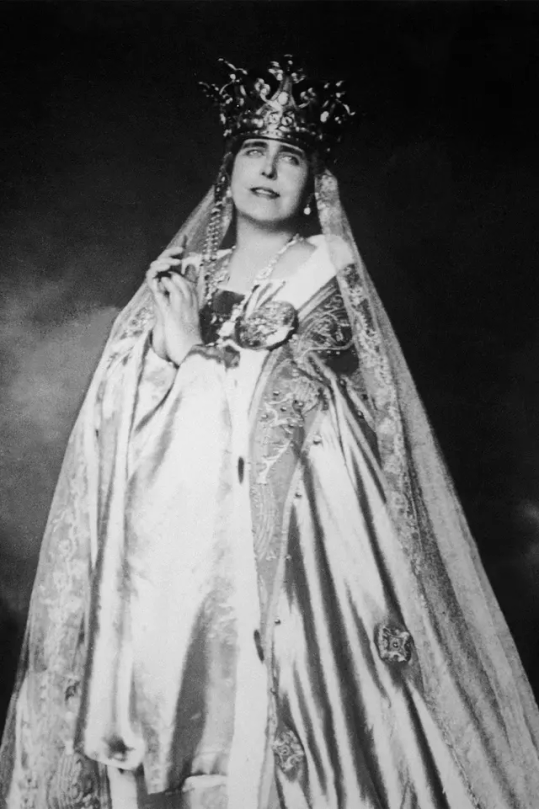
She died in this room, at Pelișor Castle (rather an oversized hunting lodge, if you ask me), in 1938. The walls are covered in gold leaf and the Art Nouveau pattern is Scottish thistles:

Funnily enough, S knows this place very well, since that ahem...forgettable Hallmark movie was shot exactly there (and in the bigger Peleș Castle, the real royal summer retreat - looks more like a Bavarian manor, but hey, it was very daring to build it smack on the border of its times).
I am not even sorry for my answer which took you thousands of miles away from the question and from that horrible morning in January 2016. It was completely premeditated :)
69 notes
·
View notes
Text
Opera on YouTube
I've shared links to complete opera performances before, but I love to share them, so I thought I'd make a few masterposts.
These list are by no means the only complete filmed performances of these operas on YouTube, but I decided that ten links for each opera was enough for now.
By the way, some of the subtitles are just a part of the video, while others require you to click CC to see them.
Die Zauberflöte (The Magic Flute)
Hamburg Philharmonic State Opera, 1971 (Nicolai Gedda, Edith Mathis, William Workman, Christina Deutekom, Hans Sotin; conducted by Horst Stein; English subtitles)
Ingmar Bergman film, 1975 (Josef Köstlinger, Irma Urrila, Håkan Hagegård, Birgit Nordin, Ulrik Cold; conducted by Eric Ericson; sung in Swedish; English subtitles)
Salzburg Festival, 1982 (Peter Schreier, Ileana Cotrubas, Christian Bösch, Edita Gruberova, Martti Talvela; conducted by James Levine; Japanese subtitles)
Bavarian State Opera, 1983 (Francisco Araiza, Lucia Popp, Wolfgang Brendel, Edita Gruberova, Kurt Moll; conducted by Wolfgang Sawallisch; English subtitles)
Metropolitan Opera, 1991 (Francisco Araiza, Kathleen Battle, Manfred Hemm, Luciana Serra, Kurt Moll; conducted by James Levine; English subtitles)
Paris Opera, 2001 (Piotr Beczala, Dorothea Röschmann, Detlef Roth, Desirée Rancatore, Matti Salminen; conducted by Ivan Fischer; no subtitles)
Royal Opera House, Covent Garden, 2003 (Will Hartman, Dorothea Röschmann, Simon Keenlyside, Diana Damrau, Franz Josef Selig; conducted by Colin Davis; no subtitles) – Act I, Act II
La Monnaie, Brussels, 2005 (Topi Lehtipuu, Sophie Karthäuser, Stephan Loger, Ana Camelia Stefanescu, Harry Peeters; conducted by René Jacobs; French subtitles)
Kenneth Branagh film, 2006 (Joseph Kaiser, Amy Carson, Benjamin Jay Davis, Lyubov Petrova, René Pape; conducted by James Conlon; sung in English)
San Francisco Opera, 2010 (Piotr Beczala, Dina Kuznetsoca, Christopher Maltman, Erika Miklósa, Georg Zeppenfeld; conducted by Donald Runnicles; English subtitles)
La Traviata
Mario Lanfrachi studio film, 1968 (Anna Moffo, Franco Bonisolli, Gino Bechi; conducted by Giuseppe Patané; English subtitles)
Glyndebourne Festival Opera, 1987 (Marie McLaughlin, Walter MacNeil, Brent Ellis; conducted by Bernard Haitink; Italian and Portuguese subtitles)
Teatro alla Scala, 1992 (Tiziana Fabbricini, Roberto Alagna, Paolo Coni; conducted by Riccardo Muti; English subtitles)
Royal Opera House, Covent Garden, 1994 (Angela Gheorghiu, Frank Lopardo, Leo Nucci; conducted by Georg Solti; Spanish subtitles)
Teatro Giuseppe Verdi, 2003 (Stefania Bonfadelli, Scott Piper, Renato Bruson; conducted by Plácido Domingo; Spanish subtitles)
Salzburg Festival, 2005 (Anna Netrebko, Rolando Villazón, Thomas Hampson; conducted by Carlo Rizzi; no subtitles)
Los Angeles Opera, 2006 (Renée Fleming, Rolando Villazón, Renato Bruson; conducted by James Conlon; English subtitles)
Opera Festival St. Margarethen, 2008 (Kristiane Kaiser, Jean-Francois Borras, Georg Tichy; conducted by Ernst Märzendorfer; English subtitles)
Teatro Real di Madrid, 2015 (Ermonela Jaho, Francesco Demuro, Juan Jesús Rodríguez; conducted by Renato Palumbo; English subtitles)
Teatro Massimo, 2023 (Nino Machiadze, Saimir Pirgu, Roberto Frontali; conducted by Carlo Goldstein; no subtitles)
Carmen
Herbert von Karajan studio film, 1967 (Grace Bumbry, Jon Vickers; conducted by Herbert von Karajan; English subtitles)
Vienna State Opera, 1978 (Elena Obraztsova, Plácido Domingo; conducted by Carlos Kleiber; English Subtitles)
Francisco Rosi film, 1982 (Julia Migenes, Plácido Domingo; conducted by Lorin Maazel; English subtitles)
Metropolitan Opera, 1987 (Agnes Baltsa, José Carreras; conducted by James Levine; English subtitles)
London Earls Court Arena, 1989 (Maria Ewing, Jacque Trussel; conducted by Jaques Delacote; English subtitles)
Royal Opera House, Covent Garden, 1991 (Maria Ewing, Luis Lima; conducted by Zubin Mehta; English subtitles) – Acts I and II, Acts III and IV
Arena di Verona, 2003 (Marina Domashenko, Marco Berti; conducted by Alain Lombard; Italian subtitles)
Royal Opera House, Covent Garden, 2006 (Anna Caterina Antonacci, Jonas Kaufmann; conducted by Antonio Pappano; English subtitles) – Acts I and II, Acts III and IV
Metropolitan Opera, 2010 (Elina Garanca, Roberto Alagna; conducted by Yannick Nézet-Séguin; English subtitles) – Acts I and II, Acts III and IV
Opéra-Comique, 2023 (Gaëlle Arquez, Frédéric Antoun; conducted by Louis Langrée; English subtitles)
La Bohéme
Franco Zeffirelli studio film, 1965 (Mirella Freni, Gianni Raimondi; conducted by Herbert von Karajan; English subtitles)
Metropolitan Opera, 1977 (Renata Scotto, Luciano Pavarotti; conducted by James Levine; no subtitles)
Teatro alla Scala, 1979 (Ileana Cotrubas, Luciano Pavarotti; conducted by Carlos Kleiber; no subtitles)
Opera Australia, 1993 (Cheryl Barker, David Hobson; conducted by Julian Smith; Brazilian Portuguese subtitles)
Teatro Regio di Torino, 1996 (Mirella Freni, Luciano Pavarotti; conducted by Daniel Oren; Italian subtitles)
Teatro alla Scala, 2003 (Cristina Gallardo-Domâs, Marcelo Alvarez; conducted by Bruno Bartoletti; Spanish subtitles)
Zürich Opera House, 2005 (Cristina Gallardo-Domâs, Marcello Giordani; conducted by Franz Welser-Möst; no subtitles)
Robert Dornhelm film, 2009 (Anna Netrebko, Rolando Villazón; conducted by Bertrand de Billy; no subtitles)
Opera Australia, 2011 (Takesha Meshé Kizart, Ji-Min Park; Shao-Chia Lü; no subtitles)
Sigulda Opera Festival, 2022 (Maija Kovalevska, Mihail Mihaylov; conducted by Vladimir Kiradjiev; English subtitles)
#opera#youtube#complete performances#die zauberflöte#the magic flute#la traviata#carmen#la boheme#wolfgang amadeus mozart#giuseppe verdi#georges bizet#giacomo puccini
44 notes
·
View notes
Note
Is it true that empress sissy was bad mother? Or just rumours
I think it really depends on what do you understand as being “a bad mother”. First of all royal women were not expected to be the main carers of their children: this job was divided among the many people in charge of the well-being of the kids. Parents usually only saw their kids little on a daily basis, since they did not even ate together. So one shouldn’t expect Elisabeth to have been changing diapers and heating milk bottles. The second thing to consider is just how young she was when she became a mother; giving birth to three consecutive babies in such a short time spam (with the additional stress of knowing everyone is expecting you to produce an heir) must have take a huge toll on her, so I don’t think is that surprising if she didn’t smoothly adjust to the role of mother.
Even so, she did love her children, as this letter she wrote to a Bavarian relative soon after the birth of her first child shows:
My little one really is already very charming and gives the Emperor and me enormous joy. At first it seemed very strange to me to have a baby of my own; it is like an entirely new joy, and I have the little one with me all day long, except when she is carried for a walk, which happens often while the fine weather holds. (Hamann, 1986)
But Elisabeth had no control in how her eldest children were raised: her mother-in-law, Archduchess Sophie, took charge of them. Something important to keep in mind, however, is that taking charge of them doesn’t mean that she personally cared them (again, this wasn’t the role of royal woman), but that she chose the staff of nursemaids, nannies, governesses and tutors that oversaw the children’s caring and later education. But this lack of control over her children ended up being a great source of sorrow for the young mother.
During this time the first big conflict between Elisabeth and Sophie arose: the children’s nursery was placed on the same floor as Sophie’s appartements, which meant that she could go over to see her granddaughters with a lot more of freedom than Elisabeth, whose appartements where on a different floor. Being on a different floor meant than she could only see her daughters during the times set by protocol, and always in company of her retinue of ladies and lackeys, which ended up limiting even more the time she could spend with them in privacy. She told to her lady-in-waiting Marie Festetics in 1872:
Only now do I understand what bliss a child means. Now I have finally had the courage to love the baby and keep it with me [her fourth child Marie Valerie]. My other children were taken away from me at once. I was permitted to see the children only when Archduchess Sophie gave permission. She was always present when I visited the children. Finally I gave up the struggle and went upstairs only rarely.
This statement comes from almost twenty-years after the events, so it should be taken with a bit of a grain of salt (in the first letter I quoted Elisabeth mentions that she had Baby Sophie with her “all day long”, so she wasn’t “taken away at once” as she claims here). The most important takeaway from this statement to me is that even after all those years the fact that she wasn’t allowed to see her girls freely hurt her. So it’s not surprising that her first act of “rebellion” at court was when she decided to move the nursery to her floor in 1856.
After successfully moving the nursery near to her appartements, slowly Sisi started to take more and more control of her children. At the end of 1856 Franz Josef and Elisabeth went on a state visit to Lombardy-Venice and they took Baby Sophie with them. This tour was relatively successful, and months later they tried to replicate its success on Hungary. For this tour the parents decided to take not only Baby Sophie but also Gisela, since it was planned to last two months and they didn’t want to be separated from their daughters for such a long time.
As it’s known, Baby Sophie sadly died of typhus during this trip. Although is often repeated that Archduchess Sophie blamed Elisabeth for the child’s death, she in fact was very sympathetic towards the young mother, since she also had lost an infant daughter and could understand her pain. But Elisabeth seemed to blame herself regardless, and soon fell into a deep depression that lasted months and filled her entire family with worry.
By the end of 1857 she showed signs of being pregnant again, and in September of 1858 she finally gave birth to the long awaited heir, Crown Prince Rudolf. And just as with her daughters, Elisabeth had no control over the boy’s upbringing.
In 1860 Elisabeth started to become ill - of what, nobody knew. I won’t go much into this (since that’s just an entirely different post), but by the end of the year, after exhausting all possible treatments, it was decided that the Empress should go away from court to recover from her mysterious illness. This was the beginning of Elisabeth’s two years trip - first to Madeira and then to Corfu. Franz Josef offered her to take Gisela with her, but since she couldn’t also take Rudolf (the heir had to remain in Vienna), she decided to leave her behind because she didn’t want to separate the siblings, who were very close (Winkelhofer, 2022).
Elisabeth returned a changed woman, much more confident in herself, no longer the shy girl who was easily intimidated by courtiers. But she still had no control over how her children were educated. Or that was until Rudolf started his formal education. At the age of six he was separated from his sister and governess, given his own household, and Count Gondrecourt was assigned as his tutor. Gondrecourt had the mission of “toughening up” the boy, since he was considered to be weak of mind; his method to achieve this consisted in psychologically torturing Rudolf, and after he fell ill, seemingly of a nervous collapse. When Elisabeth discovered what her son was going through she was horrified and decided to step in. So she did something almost unprecedented, not only for her personally, but also in general for a woman of her status: she gave her husband an ultimatum:
I wish to have reserved to me absolute authority in all matters concerning the children, the choice of the people around them, the place of their residence, the complete supervision of their education, in a word, everything is to be left entirely to me to decide, until the moment of their majority. I further wish that, whatever concerns my personal affairs, such as, among others, the choice of the people around me, the place of my residence, all arrangements in the house etc. be reserved to me alone to decide.
Even more surprisingly for the time, Franz Josef agreed, and gave her full control of the children’s education. Gondrecourt was dismissed and Colonel Josef Latour was personally chosen by Elisabeth in his place. Latour was highly unpopular at court because he wasn’t an aristocrat and had very liberal political ideas, but Elisabeth protected him and he kept his job. Latour ended up becoming a close friend to his pupil until his death. But even though she now had what she had always wanted, total control of her children’s upbringing, she never became really close to her eldest daughter and son.
This is the part in which we can talk about her being “a bad mother”. When you compare her relationship to her fourth and last child, Marie Valerie, born ten years after Rudolf out of her desire to have another baby, raised entirely by her (as always keeping in mind that this means she had full control of the staff that took care of Valerie), to how she was with Gisela and Rudolf, the clear favoritism is evident. It seems that she felt more distant towards the eldest, probably a combination of her not having a saying in their upbringing until they were older and her constant trips away from court didn’t help her to close the gap. Gisela, who was a very down-to-earth person, a lot like her father, doesn’t seem to have minded this (or at least she never showed it), but Rudolf always craved for a close relationship with his mother, which he never could truly have. He adored her and was always grateful for her intervention when he was little, but seeing how all his mother’s love and attention went towards Valerie made Rudolf jealous of his younger sister; because of this the siblings also never managed to become close.
Valerie ended up feeling overwhelmed by her mother’s love. Elisabeth was very emotionally dependent on her daughter and made her her constant companion and support, which isolated the girl from the rest of her family. Valerie adored her father and felt that her mother put her against him, and Elisabeth insistance in raising her as a Hungarian (Valerie’s mother tongue wasn’t German, but Hungarian) made her hate Hungary. She turned out to be quite different to what her mother had planned, and that was probably just the result of having so many expectations imposed on her since she was born. But even so Elisabeth loved her and only wanted her to be happy. And this is shown by the fact that (unlike Queen Victoria with her daughter Beatrice) she didn’t want her to stay by her side forever, but to marry for love and form her own family. So she supported her decision to marry Archduke Franz Salvator, who out of all her suitors was the least favorite (Franz Josef wanted her to marry the Crown Prince of Saxony and Rudolf Archduke Eugen).
So was she a bad mother? It’s complicated. She loved her children (and I do think she loved all of them, despite Gisela being often considered the “forgotten” child), fought to have control on how to raise them (which was unusual for the time) and when she lost them she deeply grieved them. But she couldn’t be the support that her son needed, and the child she did gave her constant love felt suffocated. Sometimes an answer isn’t as a easy as yes or not, and I think we should keep that in mind when looking at Elisabeth as a mother. I hope you find my answer helpful, and sorry if it’s too long!
SOURCES:
Hamann, Brigitte (1986). The Reluctant Empress: A Biography of Empress Elisabeth of Austria (translation by Ruth Hein)
Winkelhofer, Martina (2022). Sissi. La vera storia. Il camino della giovane imperatrice (translation by Federica Saccucci)
#empress elisabeth of austria#sophie of bavaria archduchess of austria#archduchess sophie of austria#gisela of austria princess of bavaria#crown prince rudolf of austria#archduchess marie valerie of austria#asks
80 notes
·
View notes
Text

Portrait of Therese of Saxe-Hildburghausen (1792-1854), Wife of Ludwig I of Bavaria (1786-1868)
Artist: Joseph Karl Stieler (German, 1781–1858)
Date: 1826
Medium: Oil on canvas
Collection: Neue Pinakothek, Munich, Germany
Description
Queen Theresa (1792-1854) was a daughter of Frederick, Duke of Saxe-Altenburg, and Duchess Charlotte Georgine of Mecklenburg-Strelitz, eldest daughter of Charles II, Grand Duke of Mecklenburg-Strelitz. As a child she had grown up in the rather modest capital of her father’s small duchy of Saxe-Hildburghausen, and not in his later capital of Altenburg, which he acquired after the Saxon dukes reorganised their states in 1826. In 1809, Theresa had been on the list of possible brides for Napoleon, but following the latter’s marriage to the Archduchess Marie-Louise, she married the Bavarian Crown Prince Ludwig, on 12 October 1810. Their wedding was the occasion of the first ever Oktoberfest, which has been repeated almost every year since.
Her husband succeeded as king in 1825 but his numerous love affairs caused her some pain, which she tolerated while refusing to allow his mistresses to attend her at court. On one occasion, in 1831, she left the capital to make her disapproval clear – nonetheless, despite the difficulties in their marriage she was the mother of nine children, the oldest, Maximilian, succeeding as king when Ludwig was deposed following the 1848 revolution. Therese proved to be a capable royal consort, heading the government during her husband’s frequent foreign trips, and having some considerable political influence. She was particularly popular with the Bavarian public and was considered the embodiment of an idealised image of queen, wife and mother and was involved in a great number of charitable organisations for widows, orphans and the poor. She was the object of great sympathy during her husband’s very public infidelity with the notorious courtesan, Lola Montez, which contributed to the demands for his abdication in 1848.
This painting must be particularly noted for the extraordinary attention to the queen’s silk embroidered robes, her bracelets, necklace and earrings and the splendid tiara placed alongside the royal crown. Her robe is embroidered with gold leaves and flowers and along the bottom edge the blue and silver diamond lozenges of the Wittelsbach arms are sewn into gold edged ovals. An ermine robe hangs from over her shoulder to the ground and in her left hand she holds a gold bejewelled fan. Despite its small scale this superbly executed portrait holds the viewer’s attention in every detail, and is a testament to the artist’s mastery of grand, royal portraiture.
#portrait#painting#queen theresa of Bavaria#full length#oil on canvas#fine art#oil painting#german history
16 notes
·
View notes
Text



13th December 1805 saw the birth at Corriemulzie near Braemar of Johann von Lamont, who would become an eminent German astronomer.
Born as John Lamont, the second of three sons of Robert Lamont, forester, and his second wife Elspeth Swan, after his father's death in 1817, being a Catholic, he was sent to be educated at the Benedictine monastery of St James, Ratisbon (now Regensburg in Bavaria), it wasn't unusual for some to be sent abroad to be educated.
Here he was tutored in mathematics and science by the prior, Father Benedikt Deasson, and spent his vacations as an assistant at the observatory at Bogenhausen, now a suburb of Munich. Later he became an official staff member, took his doctorate of philosophy at Munich University in 1830 and was eventually to succeed as Observatory Director when Johann Georg von Soldner died. He was elected a member of the Bavarian Academy of Sciences in 1836 and Professor at Munich University in 1852.
After making many discoveries in his career he received many honours including the Order of the Crown of Bavaria, a title of nobility from the King, so that his name became "von Lamont", he was a Foreign Member of the Royal Society, Fellow of the Royal Astronomical Society and of the Royal Society of Edinburgh. A crater on the Moon and a crater on Mars are named after him. He never married and led a solitary life, dying at the observatory on 6th August 1879 after 51 years of work there. Von Lamont bequeathed a fortune to be used for scholarships in astronomy and mathematical physics.
He was buried in the churchyard of St Georg in Bogenhausen which is on the edge of Munich, I love his effigy on his tomb, very striking
9 notes
·
View notes
